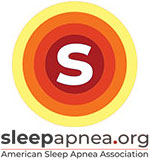Diabetes Standards of Care and Resources for Clinicians and Educators
Obstructive Sleep Apnea
The most common form of sleep-disordered breathing is obstructive sleep apnea (OSA). An apnea is a temporary absence or cessation of breathing, lasting 10 or more seconds. With OSA, the upper airway collapses, obstructing air flow, even as the person makes an effort to breathe.
OSA is associated with comorbidities such as hypertension, obesity or overweight, memory problems, headaches, erectile dysfunction, and cardiovascular disease. In patients with diabetes, OSA increases the likelihood of worse glycemic control.
Resource Links
Diabetes Care Topics
Recommendations At-a-Glance
for All Topics
for All Topics
» Online version
» Print version [PDF – 269 KB]








